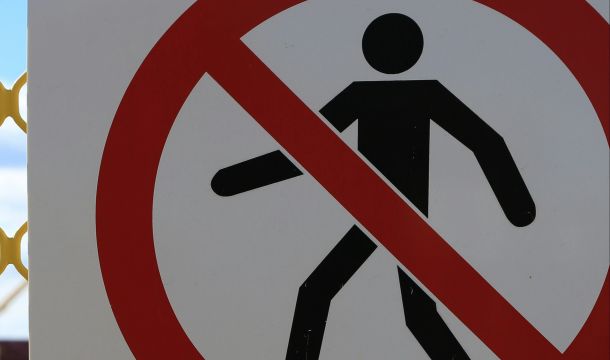CURRENT DEVELOPMENTS REGARDING USE OF INDEPENDENT CONTRACTORS
Almost every company hires contractors to do some function or other. In spite of various types of legal attack, the use of independent contractors is growing, not declining. This article will summarize some of the current developments concerning the use of contractors.
Secretary of Labor Acosta last November revoked two Obama Administration guidance memos dealing with independent contractor and joint employer relationships. In December, the new NLRB Republican majority in a 3-2 ruling in Hy-Brand, reverted to the traditional test of joint employment relationships and reversed an Obama-Era doctrine indicating indirect control of a contractor’s employees to be sufficient to establish a joint employment relationship. The Hy-Brand decision itself was vacated because of a potential conflict of interest on the part of one of the NLRB members, casting doubt on the current status of joint employment issues as far as the NLRB is concerned. (Wimberly Lawson represents the employer in the Hy-Brand litigation.)
The NLRB is also reviewing a case dealing with the issue of whether the employer violates the Labor Act if it mis-classifies employees as independent contractors. Velox Express, Inc., Case 15-CA-184006, Amicus Briefs 4/30/18. The union takes the position that when a business misinforms workers that they are independent contractors, they are being told they have no rights or protections under the Labor Act, which chills legitimate union or concerted activities. Employers take the position that misclassification alone is insufficient to violate the Labor Act, and some other coercive act or conduct is necessary. The Republicans now having re-established a 3-2 majority at the NLRB, and the new NLRB General Counsel, are taking a more pro-employer approach, so it is likely that there will be no ultimate ruling that a misclassification case is a per se NLRB violation.
The State of California is currently struggling with the definition of independent contractor under its state employment laws. In February of this year, a judge ruled that a Grub Hub food delivery driver was an independent contractor rather than an employee, but more recently the California Supreme Court changed its test for who is an employee in its Dynamax decision.
Congress joined the action when the House of Representatives last year passed a bill to tighten the joint-employment standard under federal labor laws as well as the wage and hour law, but the measure is unlikely to get enough votes in the Senate to avoid a filibuster. The latest development relates to an announcement from the NLRB in its regulatory agenda released on May 9, 2018 that it may develop a regulation to resolve the joint employer liability debate. The rule-making process would likely take a long time, however, and cases would continue to progress through the current system. Further, a proposed Labor Department rule is supposed to be published in the near future which would change the definition of "employer" to make it easier for individuals and employers in the same industry or geography to band together in an association and form their own health plan. There does seem to be some bipartisan support for legislation to provide portable benefits and other protections to the GIG economy workforce of independent contractors. Federal and state law makers are considering changes like adding a new classification covering workers who fall between traditional employees and independent contractors. Republicans tend to support this approach while Democrats seem divided because some believe any changes could lessen worker protections that employment status provides. Democrat Senator Mark Warner of Virginia has introduced with bipartisan support the Portable Benefits of Independent Workers Pilot Program Act which would use a DOL grant program to help nonprofits and local governments experiment with portable benefits for GIG workers.
Meanwhile, there continues to be an onslaught of lawsuits in which certain independent contractors claim they are actually employees, and thus entitled to various benefit programs and the protections of the various employment laws. Two of the most unusual new cases involve NFL cheerleaders and a female professional mixed martial arts fighter. The NFL cheerleaders filed an employment discrimination charge with the EEOC contending that the New Orleans Saints had workplace rules for cheerleaders that were discriminatory. One cheerleader was terminated allegedly because of an Instagram post that showed her wearing a one-piece bathing suit, an apparent violation of the team’s rules. There were also reports that she had attended a party with football players, thus violating a rule that prohibits the cheerleaders from socializing with the team’s members. The contention is that not only is she an employee rather than an independent contractor, but that the difference in treatment with the male football players is discriminatory since they have no social media limitations or fraternization limitations.
In contrast, the female martial arts fighter is looking to unionize her fellow fighters, contending that the MMA Organization decided not to renew her contract in retaliation for her attempt to unionize her fellow fighters. The case is complicated not only because of the unfair labor practice charge, but also because of an ongoing lawsuit filed in 2014 by multiple martial arts fighters. The case contends that the parent company is an illegal monopoly under the anti-trust laws. The contention is that if the fighters are not employees but are contractors, the organization’s rules create an unlawful monopoly.
A particularly unusual case arises in Seattle in which an ordinance allows independent contractor Uber and Lyft drivers to unionize. The U.S. Chamber of Commerce and other entities sued contending that the controversial Seattle law was inconsistent with the National Labor Relations Act, and therefore should be pre-empted by it, making the Seattle law null and void. The case remains pending.
Related Content
Get Email Updates
Recent Content

TPS Update (as of 9/3/2025)

DOL To Shut Down OFCCP and Transfer Duties to EEOC

Meaning of Supreme Court Ruling Limiting Nationwide Injunctions in Birthright Case

In Spite of Adminstration Changes, Monitoring of the Workplace Continues to Create Legal Issues

The Importance of Corporate Culture
